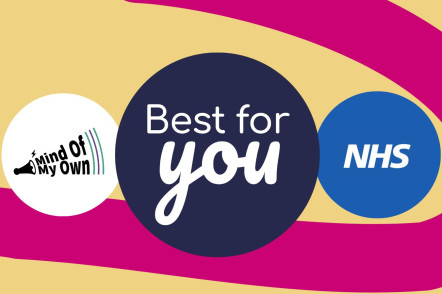We receive lots of requests for new features, changes and improvements to our apps. All suggestions are logged and mapped, before being assessed against each of our 10 design principles. If an idea doesn’t fit with the design principles, it won’t be finding its way into our apps. This is how we stay focused on delivering a quality product.
1. Start with user needs
Nothing should be designed or built unless it is answering a known user need.
To ascertain user need we do primary and secondary research, analyse data and interact with users.
2. Work to a roadmap
The priorities for design have to align with the organisation’s vision and business plan
The Mind Of My Own team maps all the insights about user need and user experience when devising the first draft of the road map (usually twice a year). The Board then aligns the emergent themes with the strategic business objectives and this determines the priority order for development.
3. Co-design and co-produce
The users of a product or service should be actively involved in its design and implementation.
We have a rolling programme of co-production with young people (and to a lesser extent their workers). This can involve innovating, designing, paper prototyping, digital testing and copy writing/editing.
4. Work in an Agile environment
Design and development should be able to adapt to changing needs and be responsive to user testing and input.
Agile is an iterative, team-based approach to development that emphasises rapid delivery of an application through “time-boxed” development called “sprints.” We develop using an Agile framework, running around six sprints a year in a constant cycle of iteration.
5. Iterate, then iterate again….
The best way to build good services is to start small and iterate constantly. Iteration reduces risk, making big failures unlikely and turning small failures into positive learning.
We release minimum viable products (MVP) early, test them with users, then move from alpha to beta to live, making amendments and refinements based on feedback.
6. Design with evidence
Evidence of user need and user behaviours should guide decision making, not pet theories, hunches, or subjective views.
Mind Of My Own uses a combination of desk research into real world behaviour, ie how existing services are used, with inbuilt usage analytics. Feature ideas, however beguiling, are interrogated with, ‘What is the evidence for this, how robust is that evidence and what is the user value that will be delivered?’.
7. Design for utility and delightfulness
A product or service should primarily provide utility – that is do what the user needs it to do. Additionally, it should strive to provide an enjoyable experience.
Our initial focus is always on utility – this is how we set out to achieve our mission of helping children have their voices heard by people and in places that matter. Once we believe the apps to be functioning well, we work with users to make them delightful – visually and in their usability.
8. Include everyone
Accessible design is good design. Everything we build should be as inclusive, usable and readable as possible.
Inclusion is very important to us and sometimes we have to compromise on aesthetics in order to meet the needs of users by making our products and services more accessible. We always keep in mind that the people who need Mind Of My Own apps the most may be the ones with the least ability to access them.
9. Protect and safeguard
Privacy by design is essential to protect the identities of users and their sensitive data.
The nature of Mind Of My Own apps is that they gather sensitive information and mindful of that we incorporate privacy by design into all our thinking and planning prior to development. Safeguarding user information is a core component of our information governance system, for which we are accredited with ISO27001.
10. Be open
The wider and more diverse the community engaged with a service, the stronger and better that service will become.
We value our customers and users and have open dialogue between us about ways to maintain and increase the usefulness and value of our services. Most of our development uses open source code, which relies upon the generosity of the web design community. At every opportunity the Mind Of My Own developers contribute to and share with that community.
If you are thinking about creating your own design principles, the government website is a good place to start.




